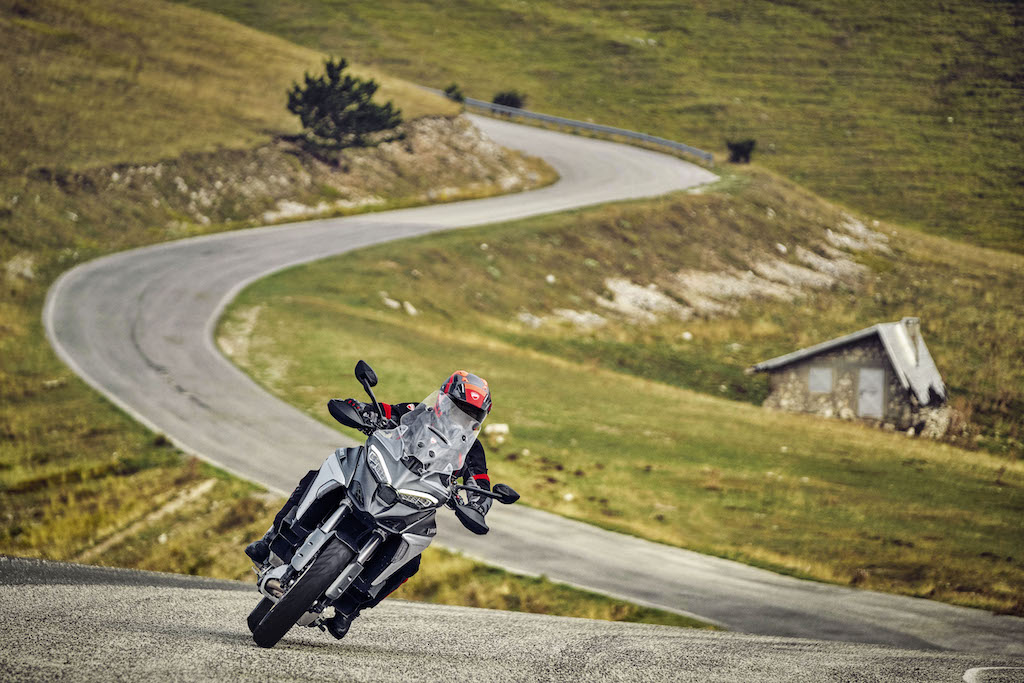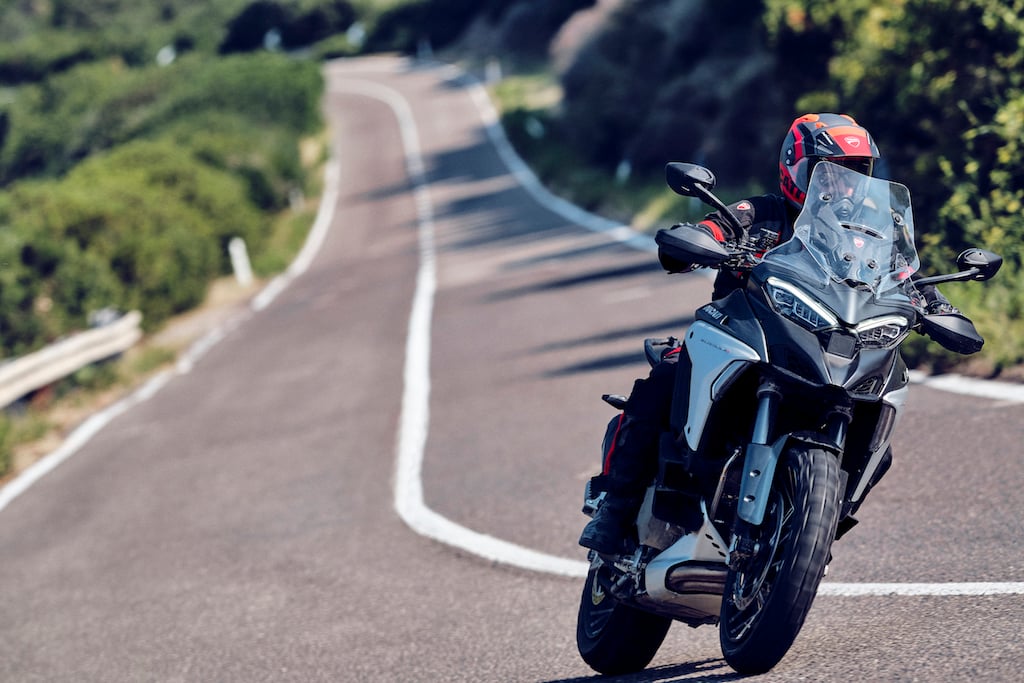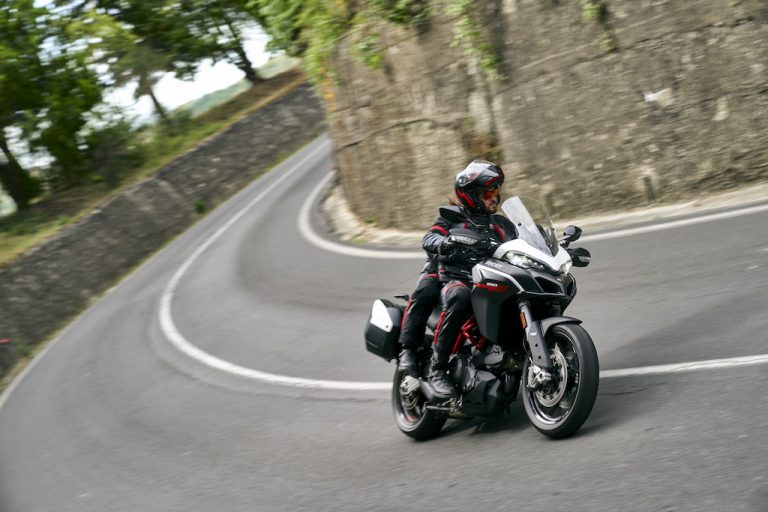Trail braking can propel your riding experience to the next level but get it wrong and you won’t stay upright for long. Misti Hurst explains how to master the technique.
Of all the riding skills and techniques out there, trail braking is one of the most misunderstood. People are drawn to the idea but there seems to be plenty of confusion about what trail braking exactly is, when it might be useful, and how it should be properly executed.
So, here’s the one-sentence explanation: Trail braking commonly refers to the process of entering a turn while the front brakes are still being applied, then gradually and smoothly releasing them as you move through the turn and begin to get back on the throttle. Simple really.
Executed correctly, it can help you stay on the brakes deeper into a corner, finesse your entry speed, and see further around a turn.
There are some specific riding situations, especially on those glorious snaking mountain passes we all like to ride, where staying on the brakes deeper, later, and further into the turn is beneficial.
For example, trail braking is useful in corners where your slowest speed is somewhere past the point where you turn in, like double apex, decreasing radius, or blind turns.
For blind entry corners, staying on the brakes deeper lets you see more of the corner before you are fully committed to it. For decreasing radius turns, (which often surprise us) trail braking can help you slow down if you have misjudged the corner and the amount of entry speed you thought you could carry.
It can also help the bike turn a little more quickly as the extra weight up front alters the steering geometry.

How to trail brake
To successfully trail brake, you’ll need to coordinate the release of the brakes with the increase in lean angle of your bike as you go into a corner. It is important to note that anytime you release the brakes there should be some trailing off of the pressure.
It doesn’t matter if you are finishing your braking while the bike is still straight up, or if you are already leant over, the brakes should be released gradually. This means smoothness is key and use of the brakes should be as controlled as possible. No jerky, aggressive, stabbing motions.
Now we know what trail braking is, it’s important to highlight what it isn’t because doing it incorrectly can lead to catastrophe.
So, trail braking certainly isn’t the process of grabbing the front brake once the bike is already leant into a turn. This is simply mid-corner braking and is one of the most common reasons for single-vehicle motorcycle crashes because it suddenly transfers excess weight onto the front tyre and overloads traction availability.
If you must brake while mid-corner to avoid an unexpected obstacle, or to slow suddenly, then do so smoothly and firmly, while at the same time standing the bike up, or counter-steering it back upright.
Advanced riding
Trail braking is considered an advanced riding technique because it takes a lot of practice and finesses to successfully pull it off. So, to begin with, it makes sense to practice trailing the brakes while your bike is upright before you start doing it while leant over.
Common advice is that you need to trail brake right to the apex of a corner, but I prefer to say that you should trail the brakes until you have set your desired entry speed, regardless of where that is in the corner. The ideal scenario in any turn is always that you are off the brakes and back on the gas as soon as possible, and rolling on the throttle throughout the turn.
One thing that can assist in giving you more traction and better front end feel while trail braking is adding downshifting and utilising engine braking. This is something I learned directly from Troy Corser, two-time World Superbike Champion. Troy discussed how late and very hard braking causes the rear of a bike to feel light, transferring weight to the front tyre, which then inhibits steering and challenges traction.
He taught me about how downshifting much earlier than you think you should, and braking sooner, softer, and longer, helps create more overall grip.
When you downshift sooner, you utilise the engine for braking and the chain force helps to pull the rear tyre down, evening out the weight distribution on the tyres, smoothing everything out, and maintaining the most possible grip.

Stay in control
Whenever you use trail braking, you should first make sure that conditions are good, the road is dry, and your control actions are smoothly executed.
When done correctly, it can help you make final adjustments to your entry speed and see more of the turn, but if relied upon too heavily, it can alter your ability to accurately judge corner speed consistently. People who rely too much on trail braking often charge the turn, braking too deep, late, and hard, and wait too long to get back on the gas.
Never forget, the purpose of braking is to set your turn entry speed. You can do this by getting all of your braking done before adding lean angle, or in some cases, by trailing the brakes as you enter the turn. But remember, as you add more lean angle, you must decrease the amount of front brake used.
Trail braking is really a specialised tool for certain situations. Just like you don’t use a hacksaw for every household job, you don’t need to trail brake in every corner.

